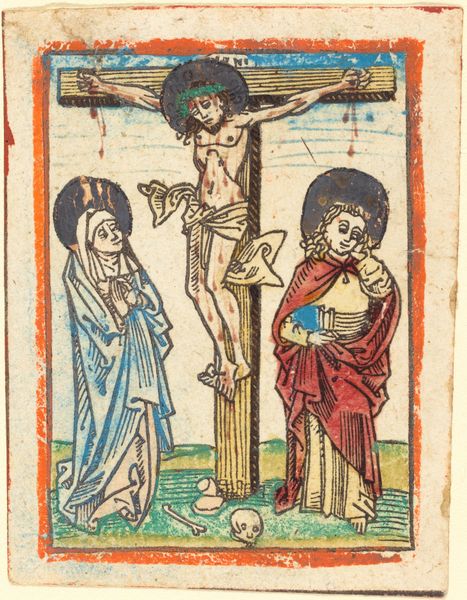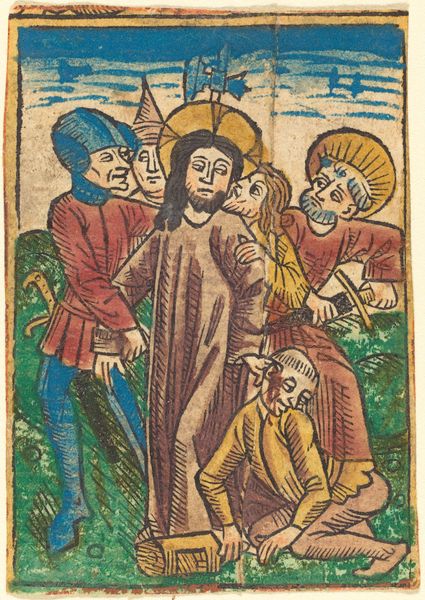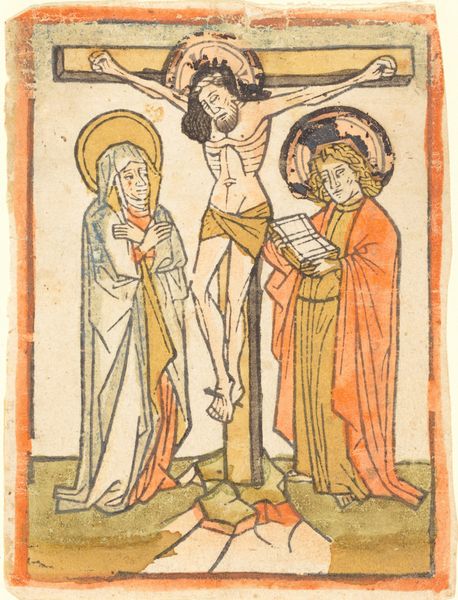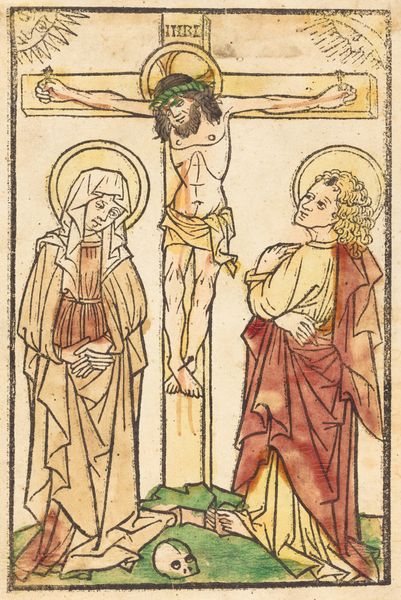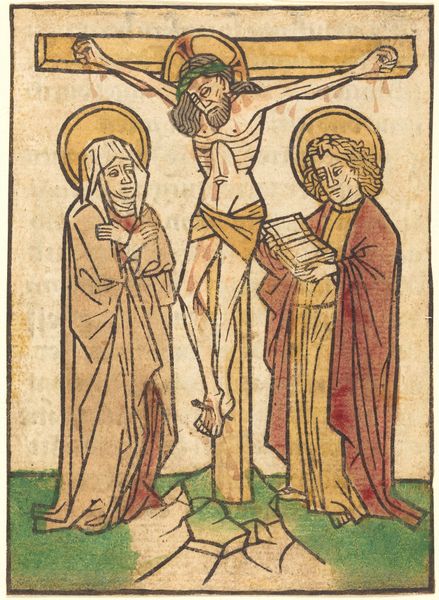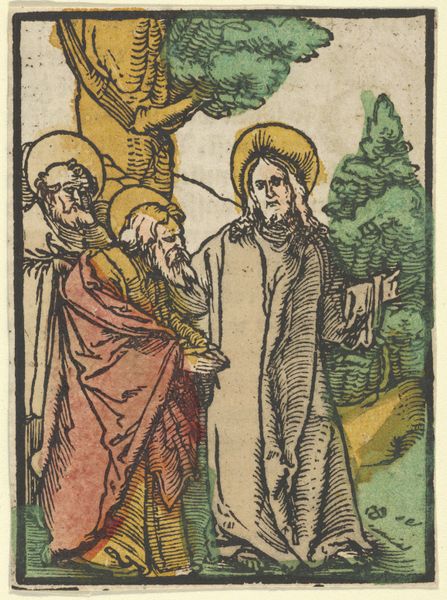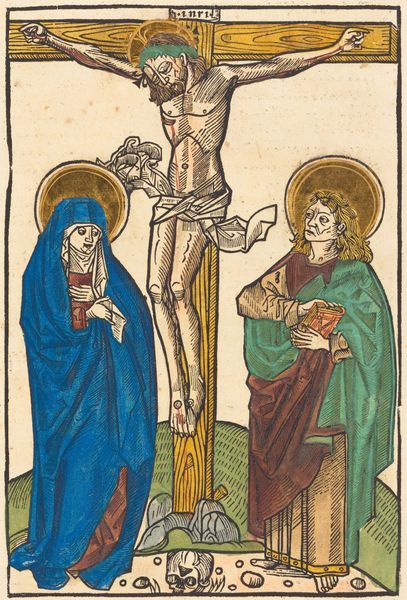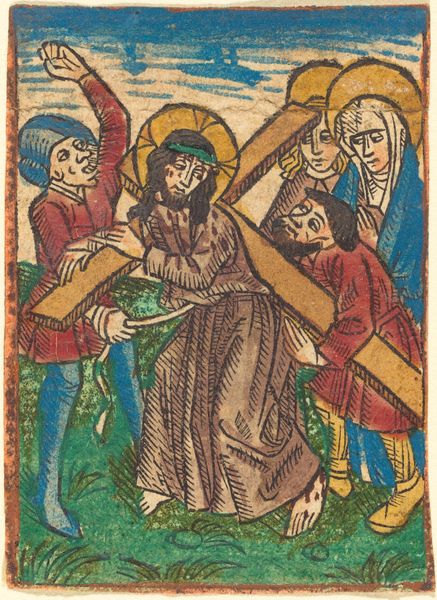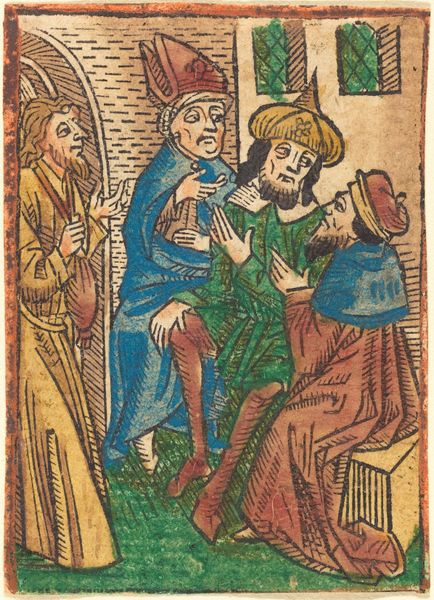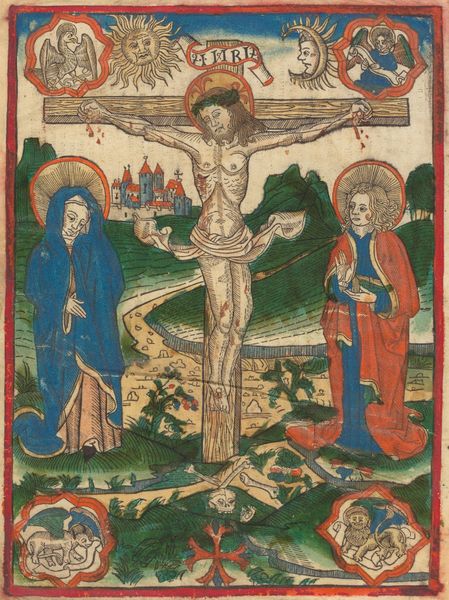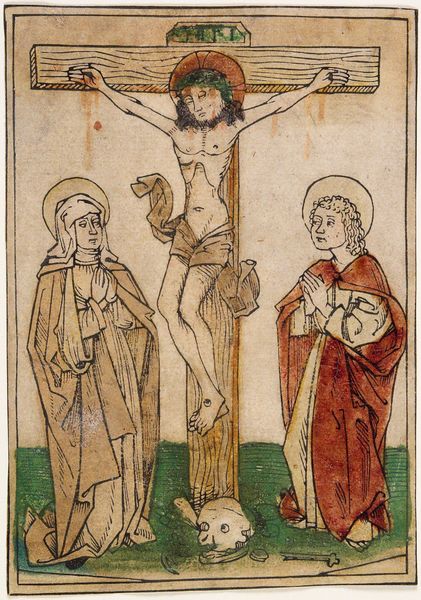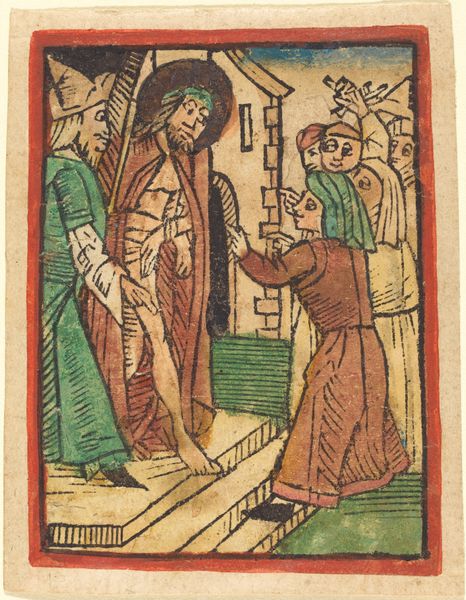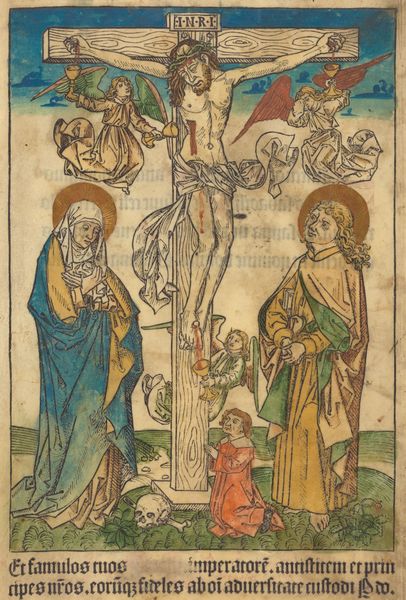
coloured-pencil, tempera, painting, watercolor
#
coloured-pencil
#
narrative-art
#
tempera
#
painting
#
landscape
#
figuration
#
watercolor
#
coloured pencil
#
history-painting
#
academic-art
#
italian-renaissance
#
early-renaissance
#
miniature
#
watercolor
Copyright: National Gallery of Art: CC0 1.0
Editor: Here we have an artwork titled "Christ on the Cross," made sometime between 1470 and 1480 by an anonymous artist, using tempera, watercolor and coloured pencil. It’s a miniature, which seems surprising for such a powerful scene. What’s your take on it? Curator: What immediately grabs my attention is the deliberate use of readily available materials. Tempera, watercolor, coloured pencil... these aren't the luxurious tools of the High Renaissance. This piece speaks to a localized, perhaps even devotional, production. The materiality itself reflects the economic and social conditions of its creation. Editor: So, you’re saying the humble materials speak to who made it and where it was made? Curator: Exactly. Consider the labor involved. A miniature, especially one so detailed, demands hours of painstaking work. It collapses the distance between the artistic act and manual labour. Think of the hands that mixed the pigments, that painstakingly applied each stroke. Were they a monk's? A layperson's? This act of creation becomes central to our understanding of the piece, doesn't it? Editor: I see your point. We're not just looking at a religious image, but also at the means and conditions that produced it. Does the choice of watercolour suggest anything further? Curator: Watercolour allows for translucence and layering, offering opportunities to create depth, but it also necessitates working quickly to make the most of each wash. Its inherent qualities speak of speed and urgency. This then influences the composition – a rapid-gestural capture as opposed to studied precision in oil paints. Editor: It really does shift my perspective. I was focused on the religious subject matter, but seeing it through the lens of materials and labour makes it a more tangible, human story. Curator: Precisely. And that shift opens up richer avenues for interpretation, doesn’t it? Seeing art through production changes everything.
Comments
No comments
Be the first to comment and join the conversation on the ultimate creative platform.

